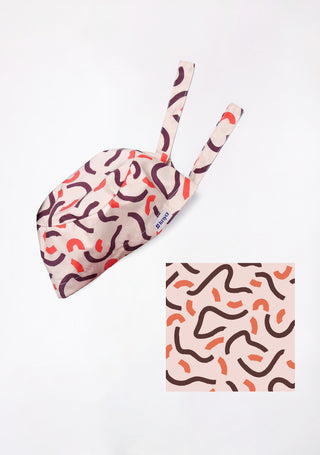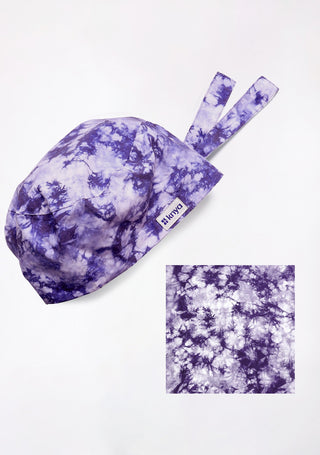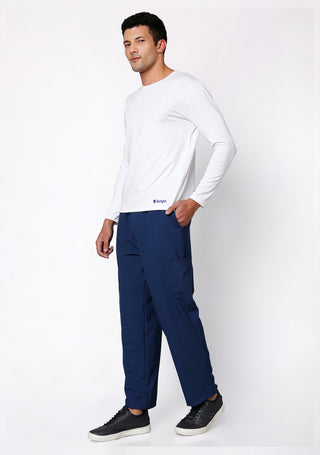Crossing the bridge from NEET UG to the medical college campus is a turning point in every student's journey. Among lectures, anatomy books, and hospital rounds, one item stands out in both appearance and meaning—the first lab coat. This white coat does not just serve as clothing. It shows a shift from classroom learning to the start of a medical profession. The first white coat is a strong symbol, worn with pride by those who have cleared the first step of becoming a doctor. It shows dedication, discipline, and readiness to enter the world of medicine.
For students stepping into the medical field, receiving and wearing the first lab coat marks the beginning of a long path in patient care, science, and responsibility. A lab coat made with proper design and fit adds confidence to this new role. This is where Knya steps in—offering medical lab coats made to meet the real needs of students and young professionals. From fabric to stitching, Knya lab coats are created with care, so that future doctors can wear them with purpose and clarity.
Discover the best lab coat designed for comfort and protection. Shop from here
The Symbol of the First Lab Coat
The white lab coat is not just a part of a dress code. It is a mark of entry into the medical profession. In many colleges, a white coat ceremony is held to give new students their first lab coat. This moment shows that the student is now part of the healthcare world.
The first coat represents trust, learning, and service. It also brings a new sense of duty. Wearing it reminds students that they are preparing to serve others with skill and care. This coat becomes part of every classroom session, lab work, and early clinical round. Over time, it starts carrying stories of effort, success, and growth.
How a Lab Coat Supports Early Medical Training
In the early years of medical college, students attend labs, dissection halls, and clinical sessions. A lab coat provides coverage and basic protection. It also creates a uniform look across campus, showing who is part of the medical team.
A well-made coat allows easy movement, is light on the skin, and stays clean for longer hours. Knya lab coats are designed with these features in mind. They support students through long classes, lab sessions, and hospital visits.
Fit and Function Matter in the First Coat
The fit of a lab coat can affect comfort. If it is too loose or tight, it can distract from studies or lab work. Pockets placed in the right areas help carry tools, notebooks, or identity cards.
Knya lab coats come in various fits and sizes. Stitching is done to keep form and structure over time. Pockets are placed smartly for daily use. The fabric holds its shape after many washes. For first-year students, wearing a coat that fits well adds to the sense of being part of a bigger mission.
Fabric That Works in Real-Life Settings
Medical students spend hours in labs and lectures. Fabric quality must match this long usage. It should allow airflow, resist stains, and be easy to clean. Heavy fabric can cause discomfort in long sessions. Thin fabric may tear or look messy.
Knya coats are made using materials chosen for strength and softness. These coats can be washed often without damage. They also dry fast and do not lose shape. This helps students stay ready for daily tasks without worrying about their coat.
From Student to Professional: The Coat Grows with the Journey
The first lab coat often stays with students for their whole first year. Some keep it as a memory even after years. As the student becomes more skilled, the coat remains a reminder of where the journey started.
Over time, students may move to longer coats or different uniforms. But the first coat always stands for the beginning. Choosing a coat made for real medical work makes this start more stable and smooth.
Knya designs coats that match college rules and professional standards. This makes it easier to stay within guidelines while also feeling confident and sharp.
Lab Coat as a Sign of Belonging
Wearing the same coat as fellow students builds a sense of community. It shows unity in purpose. It also helps teachers, staff, and hospital workers identify medical students quickly.
This sense of identity grows stronger when the coat fits well and stays neat. Knya lab coats are made for these early shared experiences. They carry clean lines, simple stitching, and long-lasting color that match the spirit of the medical journey.
Pockets Designed for Use
Pockets may seem like a small part of a coat, but they play a large role. Students carry pens, tools, or notes. A coat without pockets or with wrongly placed ones can create hassle.
Knya lab coats have enough pockets with strong stitching. They do not tear or sag after use. Placement is based on common student needs, making the design both clean and usable.
No Shortcuts in Quality
Students work hard to clear NEET UG. Their lab coat should reflect that effort. A coat that fades, tears, or loses shape after a few washes does not support their goals.
Knya does not cut corners. Every thread, button, and pocket is placed with thought. Coats are tested for washability, comfort, and strength. This helps students focus on learning rather than their uniform.
Coats Made for New Medicos
For first-year students, many experiences in college are new. The lab coat is part of those firsts—first anatomy class, first dissection, first hospital visit. Each of these moments is better when the coat worn fits well and looks neat.
Knya creates lab coats made for this phase. Sizes, cuts, and fabrics are all chosen to serve freshers who are just starting. The coat supports their early steps in the field of medicine.
Ready to explore our amazing scrubs collection? Browse the best here
Why the Right Lab Coat Sets the Right Tone
The first lab coat is more than a garment. It tells the world that the wearer is ready to enter the medical world. It also tells the student that new responsibilities have begun.
When this coat is made with care, it sets the tone for discipline and pride. Knya lab coats help students stay focused, look clean, and feel part of the medical path.
Conclusion
The journey from NEET UG to the first day in medical college is full of new starts. Among all these new moments, wearing the first lab coat holds strong meaning. It shows that the path of service and learning has begun. It also brings with it a standard of how a medical student should appear and act.
Choosing the right lab coat in this stage matters. The coat must match college rules, stay clean, fit well, and stand daily use. Knya lab coats meet these needs. They are created with the student journey in mind—strong, neat, and built to last. Each coat is stitched to serve not just the body, but also the role of a future doctor.
The first lab coat stays in memory long after the first year ends. With the right design, it becomes more than uniform. It becomes a partner in the journey of becoming a medical professional.












